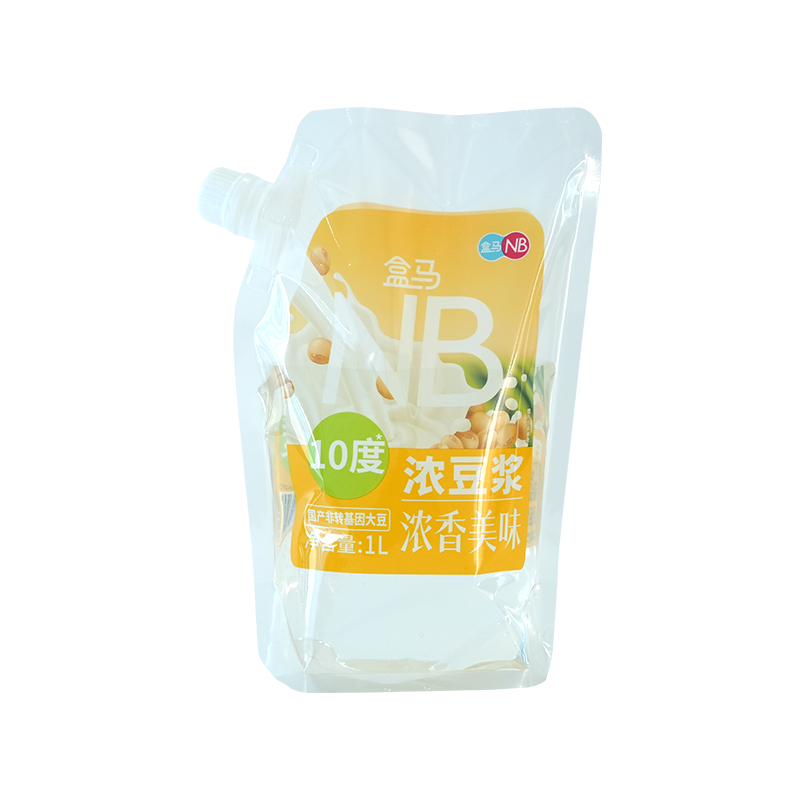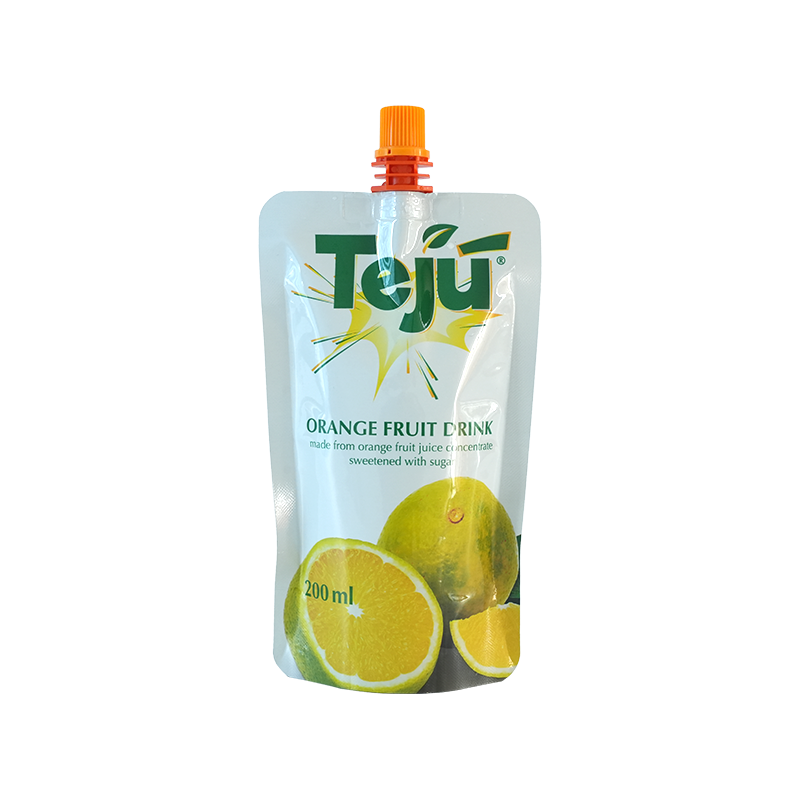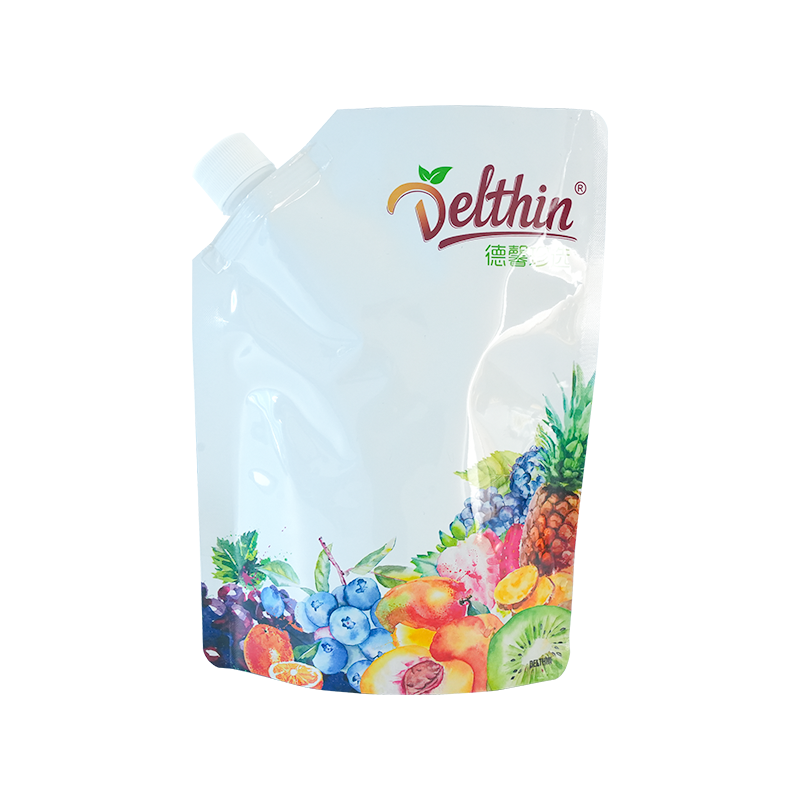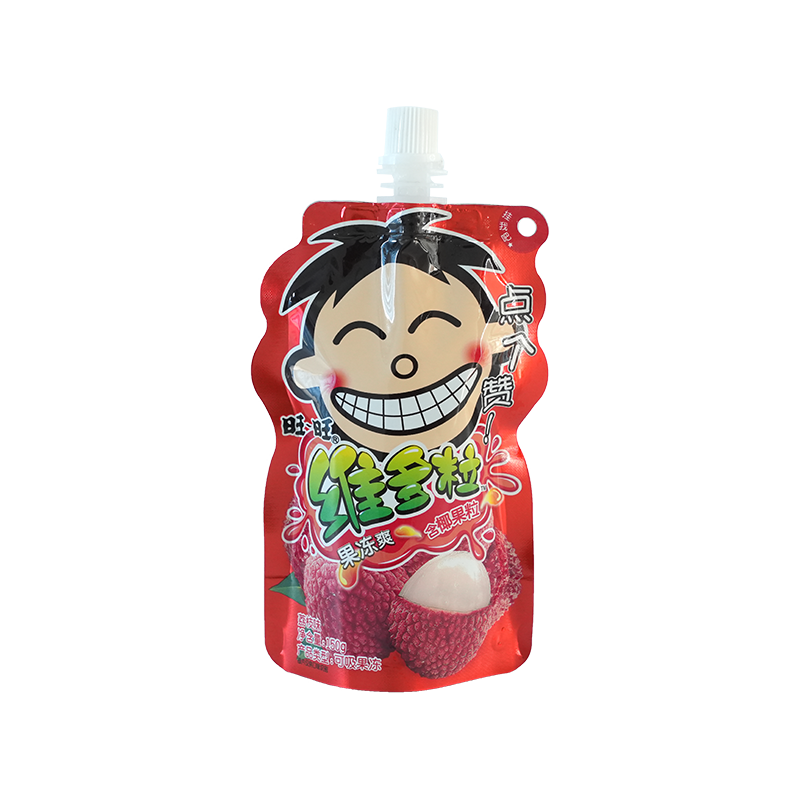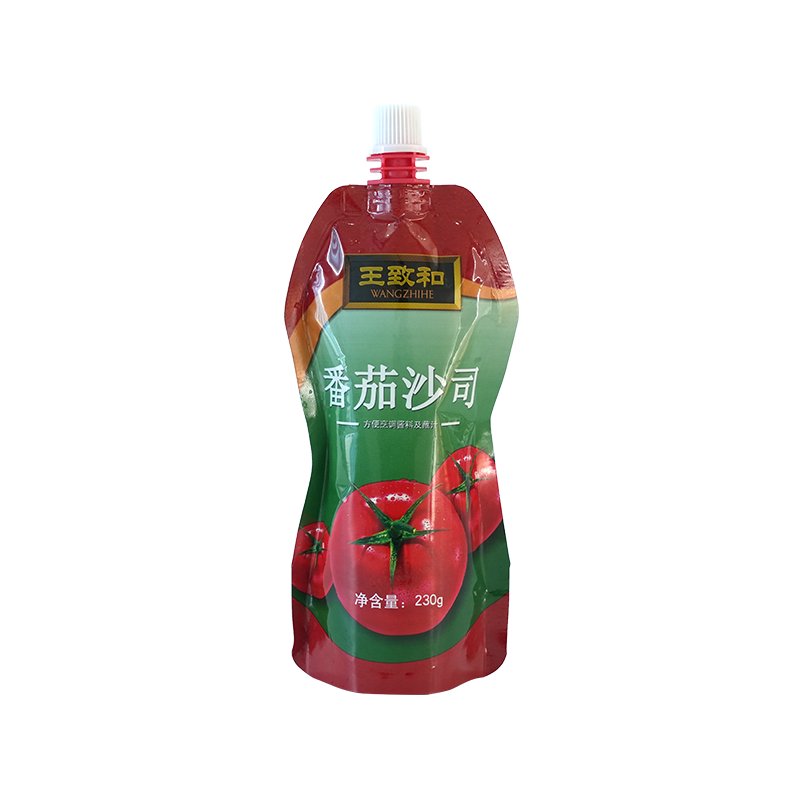The packaging landscape for beverages has evolved significantly, with the milkshake stand-up pouch emerging as a dominant and highly practical solution. This packaging format successfully combines visual appeal, logistical efficiency, and user convenience. However, the functionality and consumer experience of any pouch are critically dependent on one of its most interactive components: the spout and cap assembly. This integral subsystem is responsible for maintaining product integrity, facilitating a smooth filling process, and ultimately, defining how the end-user interacts with the product. For wholesalers, buyers, and brand managers, understanding the nuances of these components is not a minor detail but a fundamental aspect of product specification. The choice of spout and cap directly influences shelf stability, filling line efficiency, and consumer satisfaction.
The Critical Role of the Spout and Cap System
Before delving into the specific types, it is essential to understand the multifaceted role that the spout and cap system plays in the overall performance of a milkshake stand-up pouch. This component is far more than a simple closure; it is a precision-engineered assembly that serves several critical functions. Primarily, it acts as the primary barrier against contamination and leakage once the initial seal is broken. The thick, viscous nature of a milkshake demands a robust sealing mechanism to prevent seepage during transport and storage, a challenge that not all spout designs are equally equipped to handle. Furthermore, this system defines the dispensing experience. A poorly designed spout can lead to frustration, requiring excessive squeezing and potentially resulting in messy spills, whereas a well-designed one ensures a smooth, controlled flow that enhances user satisfaction.
From a production standpoint, the spout serves as the entry point during the filling process. Its design must be compatible with high-speed filling equipment to ensure efficiency and minimize downtime. The fitment attachment area must also create a hermetic seal with the pouch material to guarantee the product’s shelf life and protect it from oxygen and moisture ingress. For brands, the cap offers a valuable surface for branding through color choices, logos, or tamper-evident features that communicate quality and safety to the consumer. Therefore, selecting the appropriate spout and cap is a strategic decision that impacts supply chain operations, brand perception, and end-user experience. A thorough understanding of the available options is the first step in optimizing the packaging for a milkshake stand-up pouch.
Standard Screw Cap Spouts: The Industry Workhorse
The most common and widely recognized type of closure for a milkshake stand-up pouch is the standard screw cap spout. This system typically consists of a plastic spout, often referred to as a fitment, that is heat-sealed between the layers of the pouch laminate, and a corresponding screw-on cap. Its popularity stems from its reliability, cost-effectiveness, and consumer familiarity. The design is straightforward, making it compatible with a vast range of existing filling and capping machinery, which is a significant consideration for manufacturers.
Within the category of standard screw caps, there are important variations. The diameter of the spout is a primary differentiator. For a milkshake stand-up pouch, which typically contains a thicker product, a wider spout diameter is generally preferred. This allows for easier dispensing without requiring excessive force from the consumer. Common sizes range, but spouts with apertures from 28mm to 40mm are frequently specified for viscous products. The cap itself can also feature different liner options. A foil liner induction sealed to the spout provides the highest level of tamper evidence and product protection, creating an oxygen and moisture barrier until the consumer breaks the seal. Alternatively, a less expensive plug seal, where a plastic plug on the inside of the cap fits snugly into the spout, can be sufficient for certain applications, though it offers a lower level of protection.
The primary advantage of the standard screw cap spout is its proven performance and broad acceptance. It provides a resealable closure that helps maintain product freshness after opening. However, its limitation lies in the dispensing experience. For a thick milkshake, the consumer must often squeeze the pouch firmly, and the flow can be inconsistent. While it is a versatile and reliable choice, it may not offer the specialized functionality that some brands seek to differentiate their product in the market. This has led to the development and adoption of more specialized spout designs.
Flip-Top Caps: Enhancing User Convenience
Flip-top caps represent a significant evolution in convenience for pouch packaging and are an increasingly popular choice for the milkshake stand-up pouch. This design integrates a screw cap base with a hinged top that can be flipped open and snapped closed with one hand. This mechanism eliminates the need to unscrew and potentially misplace a separate cap, which is a notable advantage for on-the-go consumption scenarios. The one-handed operation is a key selling point that resonates with consumers seeking maximum convenience.
The functionality of a flip-top cap is particularly well-suited to a milkshake stand-up pouch. The spout underneath is typically designed to be clean-cut, allowing for a smooth flow of the product. When the flip-top is closed, it creates a secure seal that is generally leak-proof, preventing messy accidents in lunchboxes or bags. Many flip-top designs also incorporate a tamper-evident band or a perforated seal on the initial screw cap, providing the necessary assurance of product integrity before first use. For brands, the flip-top cap offers a more premium and functional feel compared to a standard cap, which can be leveraged in marketing to highlight the product’s convenience and modern packaging.
From a production perspective, flip-top caps can be slightly more complex and expensive than standard caps, and they may require specific capping equipment. However, the investment is often justified by the enhanced consumer appeal and the ability to command a higher price point. The search term “flip top cap milkshake pouch” is a common query from buyers looking for this specific convenience feature, indicating strong market demand. It is important to ensure that the sealing mechanism of the flip-top is robust enough to handle the internal pressure that can build up when squeezing a thick liquid like a milkshake, but modern designs have largely overcome this challenge.
Sports Cap and Nozzle Designs: The Ultimate in Dispensing Control
For a product category like milkshakes, which is often consumed actively, the sports cap represents the pinnacle of targeted functionality. Also known as a push-pull cap, this design features a nozzle that is opened by pulling or pushing a mechanism, allowing the consumer to drink directly from the pouch. This design is intrinsically linked to convenience and portability, making it an ideal choice for a milkshake stand-up pouch aimed at children, athletes, or anyone with an active lifestyle.
The core benefit of a sports cap is the controlled dispensing it offers. The user can regulate the flow of the milkshake more easily than with a wide-open spout, reducing the risk of choking or spills. The nozzle is designed to be comfortable in the mouth, and the one-handed operation is a significant advantage. Many sports caps are also designed to be leak-proof when closed, with a sealing mechanism that locks securely. This feature is critical for a milkshake stand-up pouch that might be tossed into a bag. From a branding perspective, the distinctive silhouette of a sports cap immediately signals a “drink-on-the-go” product, which can be a powerful market positioning tool.
There are considerations with this design. The narrow aperture of the nozzle can sometimes be prone to clogging with very thick milkshakes or those containing particulate matter like cookie crumbs or fruit pieces. Therefore, the formulation of the product must be compatible with this dispensing system. Furthermore, sports caps are typically more complex than standard caps, which can lead to a higher unit cost and may require more meticulous quality control to ensure every cap functions correctly. Despite these considerations, the search volume for “sports cap spout pouch” confirms its status as a highly sought-after feature for liquid food products, underscoring its relevance in the portfolio of any supplier of milkshake stand-up pouch packaging.
Straw-Port and Integrated Straw Solutions
Another highly convenient category of spout solutions for the milkshake stand-up pouch is the straw-port system. This design incorporates a small, sealed port separate from the main cap, which is designed to be punctured by a straw. In some advanced iterations, the pouch comes with an integrated straw attached to the side, which the consumer detaches and uses to pierce the port. This solution directly addresses the classic milkshake consumption method and is exceptionally user-friendly, particularly for younger demographics.
The primary advantage of a straw-port system is its hygiene and containment. The product remains completely sealed until the moment of consumption, ensuring maximum freshness and preventing any contamination. There is no cap to unscrew or lose, and the drinking experience is intuitive and familiar. For a milkshake stand-up pouch, this method can be more pleasant than squeezing the pouch, as it allows the consumer to drink at their own pace. The integrated straw variant adds a layer of convenience, as the consumer does not need to source a separate straw, aligning with modern packaging trends that seek to provide a complete, self-contained solution.
From a technical and supply chain perspective, the straw-port system requires precise manufacturing. The seal over the port must be strong enough to withstand transportation and handling but easily pierceable by a straw without fragmenting. If an integrated straw is included, it must be securely attached and hygienically protected. This can add complexity and cost to the packaging operation. However, for brands targeting families or the lunchbox segment, this investment is often worthwhile. The term “straw ready pouch fitment” is a key industry search term that reflects the demand for this specific functionality, making it a critical option for suppliers and buyers to understand and offer.
Material Considerations for Spouts and Caps
The functionality and safety of the spout and cap are intrinsically linked to the materials from which they are manufactured. For any food contact application, especially a milkshake stand-up pouch, the material must be food-grade, compliant with relevant regional safety regulations, and compatible with the product itself. The most common materials used are polypropylene (PP) and polyethylene (PE), chosen for their safety, durability, and cost-effectiveness.
Polypropylene (PP) is widely used for both spouts and caps due to its excellent chemical resistance, high melting point, and rigidity. Its thermal stability is particularly important for spouts that are heat-sealed onto the pouch material during the manufacturing process. PP can withstand the heat of the sealing jaws without deforming, ensuring a consistent and reliable hermetic seal. It is also a robust material for caps, providing the necessary structural integrity for screw threads and hinge mechanisms in flip-top or sports cap designs.
Polyethylene (PE), particularly high-density polyethylene (HDPE), is another common choice, often valued for its flexibility and impact resistance. While it may not have the same heat resistance as PP, it is perfectly suitable for cap applications where it can provide a good seal and a more pliable feel. In some cases, spouts may use a combination of materials, such as a PP core for heat sealing with a PE layer for added flexibility. The selection between these materials often comes down to the specific requirements of the filling process, the desired feel of the cap, and cost considerations. It is imperative that the material choice for any component of a milkshake stand-up pouch is verified for food-grade compliance and does not impart any odor or taste to the product.
Key Selection Criteria for Wholesalers and Buyers
Choosing the right spout and cap for a milkshake stand-up pouch is a multi-faceted decision that extends beyond mere preference. Wholesalers and buyers must evaluate several key criteria to ensure the selected packaging meets functional, commercial, and marketing objectives. A systematic approach to this selection process can prevent costly errors and ensure market success.
The first and most critical criterion is product compatibility. The viscosity and composition of the milkshake will dictate the ideal spout diameter and dispensing mechanism. A thick, chunky milkshake will likely require a wider spout or a robust sports cap, whereas a smoother product may perform well with a standard or flip-top cap. The second criterion is filling line compatibility. The chosen spout must be compatible with the client’s existing filling, sealing, and capping machinery. This includes the spout’s shape, its flange design for heat sealing, and the cap’s application process. Introducing an incompatible spout can lead to significant production slowdowns and inefficiencies.
The third criterion is cost-effectiveness. This involves not only the unit price of the spout and cap but also the total cost of ownership, which includes factors like filling speed, rejection rates, and shipping costs (lightweight components are advantageous). The fourth criterion is consumer convenience and market expectation. Understanding the target demographic is essential. A product for children may benefit greatly from an integrated straw, while a premium brand might opt for a flip-top cap to convey a higher-quality feel. Finally, sustainability is an increasingly important factor. Buyers are now seeking spouts and caps made from recycled materials or designed for monomaterial structures that enhance recyclability. Evaluating all these aspects holistically is essential for making a strategic decision.
Table: Spout and Cap Selection Checklist
| Criteria | Key Considerations |
|---|---|
| Product Compatibility | Viscosity, particulate content, required flow rate. |
| Filling Line Compatibility | Spout flange design, cap application method, machine tolerances. |
| Cost-Effectiveness | Unit price, filling efficiency, rejection rate, shipping weight. |
| Consumer Convenience | Target demographic, usage scenario (on-the-go vs. at home), resealability. |
| Sustainability | Material type, recyclability, use of recycled content. |
The Future of Spout and Cap Technology
The innovation in spout and cap technology for packaging like the milkshake stand-up pouch is continuous, driven by demands for greater sustainability, enhanced functionality, and improved user experience. Several emerging trends are poised to shape the future of this component. A significant area of development is in the realm of sustainable materials. The industry is actively developing and adopting spouts and caps made from post-consumer recycled (PCR) materials, as well as exploring bio-based polymers derived from renewable resources. The ultimate goal is to create a fully recyclable or compostable milkshake stand-up pouch system, where the spout and cap are made from the same type of material as the pouch itself, simplifying the recycling process for consumers and municipalities.
Another forward-looking trend is the integration of smart features. While still in its relative infancy for food packaging, technology could allow for caps that incorporate simple indicators for temperature or tampering. For instance, a color-changing element could show if the product has been exposed to temperatures that compromise its quality. Furthermore, advancements in dispensing technology are likely to continue. We may see more sophisticated self-sealing valves that offer an even higher level of leak-proof security, or ergonomic designs that are tailored for specific user groups, such as the elderly or very young children. As the milkshake stand-up pouch solidifies its position in the market, the spout and cap will continue to evolve from a simple closure into a sophisticated, multi-functional interface between the product, the brand, and the consumer.
Conclusion
The selection of a spout and cap for a milkshake stand-up pouch is a decision of profound importance, influencing everything from production efficiency and product safety to brand perception and consumer loyalty. The market offers a diverse range of options, from the cost-effective and reliable standard screw cap to the ultra-convenient flip-top and sports cap, and the intuitive straw-port system. Each design presents a unique set of benefits and considerations that must be carefully weighed against the specific requirements of the product, the production capabilities, and the target market.
A deep understanding of these components—their materials, their mechanics, and their market appeal—is an indispensable asset for any wholesaler or buyer operating in the dynamic field of flexible packaging. By moving beyond a view of the spout and cap as a mere accessory and recognizing it as a critical driver of functionality and consumer satisfaction, businesses can make more informed, strategic choices. As the industry continues to innovate, particularly in the areas of sustainability and smart technology, the humble spout and cap will undoubtedly remain at the forefront of enhancing the performance and appeal of the milkshake stand-up pouch.

